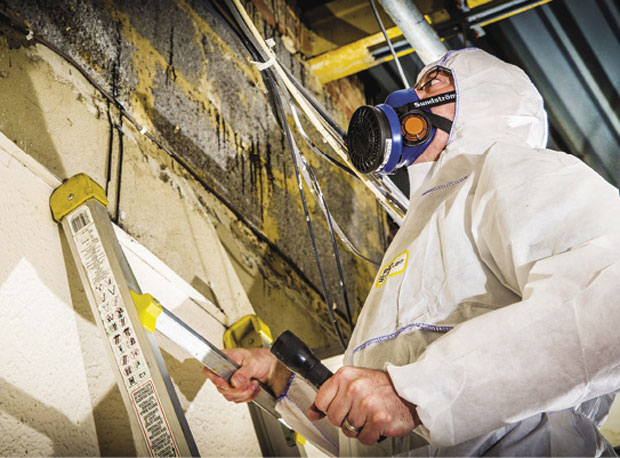Two decades on from asbestos being banned in the UK, the toxic substance continues to affect thousands of lives every year. Ian Stone, Director of UK wide asbestos consultancy, Acorn Analytical Services, explains how exciting new disposal methods are helping to save lives
There is a big misconception that asbestos is man-made, but that’s not the case. The shortest and easiest way to describe asbestos is that it is a mineral which is formed within the veins of a rock. Asbestos is also naturally an excellent electrical insulator and highly heat-resistant so, for many years, it was used as a building material.
Exposure to asbestos has been linked to Mesothelioma, a type of cancer that develops on a thin layer of tissue that covers internal organs known as the mesothelium. More than 80 per cent of Mesothelioma cases are caused by exposure to asbestos(i) with the greater the exposure, the greater the risk.
Historically, the UK was the biggest user of brown asbestos in the world and it was imported here specifically. Studies have since shown the UK also has the highest number of Mesothelioma deaths.
There is a misconception white asbestos is good, and others are bad, but this is not the case. Within the industry they are all treated the same, under the same controls.
CONTINUING RISK
Despite the fact the manufacture and supply of asbestos products in the UK was banned in 1999, the toxic substance continues to affect many lives today. When Acorn was established in 2000, the peak in death figures was predicted to be in 2010 and to be around 4,000 deaths per year. Sadly, in the last 10 years, we have actually gone over 5,000 deaths per year, meaning we are still seeing an increase in deaths more than 20 years after the ban.
Asbestos remains present in schools, hospitals, prisons, factories, offices, garage roofs and homes that were built before the ban was implemented, which means the health risk posed by asbestos is as real today as it was when the substance was first put into buildings.
Whilst this strikes a sombre note, there is good news. Firstly, if asbestos is in good condition and is safely managed, it does not present a health hazard. The second piece of good news is that there are lots of exciting developments being made with regards to the disposal of asbestos.
But the key here to keeping people safe is good management. It is shocking to see the number of organisations and businesses who have no idea about their responsibilities regarding asbestos management. Despite the tough regulations(ii) in place, there remains a number of large multi-million pound, companies who have never touched on their asbestos responsibilities before.
Unfortunately, currently it is most common for asbestos to be removed and bagged up and then taken to a waste transfer station or sent straight to landfill where it is buried in the ground. This is not creating a nice legacy for future generations. Over the years, we have exported asbestos from different countries and created millions of tonnes of asbestos products, and to date, all the asbestos waste has gone to landfill.
CHEMICAL ERADICATION
However, there are some exciting developments on the horizon. One of the innovations on the way, which sounds the most promising is chemical eradication. Basically, asbestos cement products are put into a vat of acid to break down the asbestos. Once the asbestos has been broken down, it creates a byproduct and the chemical reaction destroys the asbestos fibres. You are left with materials that can then be reused by the construction industry.
THERMAL ERADICATION
In this process, asbestos is heated up to over 1,500 degrees and when it gets to a certain temperature the asbestos breaks down and becomes inert. Again, the leftover byproduct is an inert material which can be used and reused. This has been trialled in America where it has been used in roads. This process hasn’t been introduced here yet because the UK hasn’t found a cost-effective way of bringing the method here.
KINETIC ERADICATION
Huge machines containing big balls of materials rotate and the kinetic energy which is created destroys anything that is inside. Anything put in there is broken down to the point of no return – the fibres are completely destroyed.
 BIOLOGICAL ERADICATION
BIOLOGICAL ERADICATION
Apparently, there is a biological way of breaking down asbestos. This seems to be predominately linked with chrysotile, a white asbestos, and cement products. Fungus is used to eat the material away but the trouble with this is that it takes years to do.
WHAT SHOULD YOU DO IF YOU NEED TO HAVE ASBESTOS REMOVED?
Remember, if asbestos is in good condition and well managed it does not present a risk to health. However asbestos removal is sometimes necessary because the material is in a degraded condition and cannot be managed in situ or repaired. It is important to remember that asbestos removal works must be carried out by a fully competent and qualified contractor who has appropriately trained staff to carry out the works. They also require the correct insurances to work with asbestos in addition to having provision for disposal of the asbestos waste.





